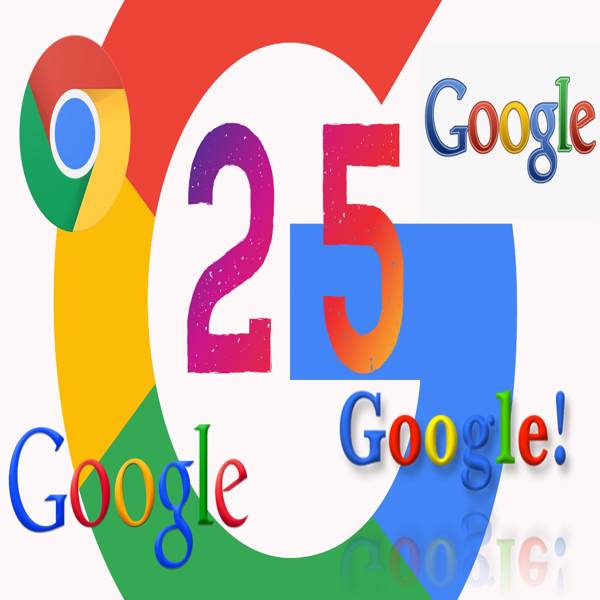Google is celebrating its 25th birthday today with a special Doodle. While Google is always looking to the future, birthdays are a good time to reflect on the past.
Two brilliant computer science students at Stanford University, Larry Page and Sergey Brin, met in the mid-1990s. They began a research project called BackRub, which eventually became the world-changing search engine Google.
Larry Page studied the complex mathematical relationships between links on the World Wide Web. He developed a groundbreaking search algorithm that made Google the search engine giant it is today. By 1998, their project had evolved into Google, a name inspired by the mathematical term “googol,” which represents a very large number.
Google was officially founded in August 1998, when Andy Bechtolsheim, co-founder of Sun Microsystems, wrote Larry Page and Sergey Brin a check for $100,000. With this investment, Page and Brin moved from their Stanford dorm room to their first office: a rented garage in Menlo Park, California. The garage had both computers and a ping pong table, and it became their home for the next few years as they worked to create a better way to organize the internet.
Google’s Impact
Google’s impact goes beyond its search engine. With products like YouTube, Android, Gmail, and Google Maps, it has become an essential part of daily life for billions of people around the world.
Its influence in the tech industry grew significantly when it became the default search engine for Yahoo in 2000. The launch of AdWords in October 2000 laid the foundation for Google’s dominance in online advertising.
Gmail’s Impact
In 2004, Google announced that Gmail would offer 1GB of storage capacity, a staggering amount at the time. This made Gmail an integral part of our lives and helped push back the competition from YahooMail and Hotmail. Google went public in the same year.
Google’s Expansion into Mobile and Online Video
This continued to innovate beyond search and email. In 2005, it acquired Android, a mobile operating system, and launched Google Talk, a messaging service. In 2006, It acquired YouTube, an online video platform, signaling its entry into the online video space.
Its acquisition spree continued in 2007 with DoubleClick, an online advertising company, expanding its influence in online advertising. Universal search, introduced in 2007, allowed users to access a wide range of content types in one search.
Also read: World Pharmacists Day: Celebrating the Essential Role of Pharmacists in Improving Global Health
In 2008, this unveiled its first Android phone, the T-Mobile G1, and introduced the Chrome web browser. In the following years, Google launched Google Glass, acquired the mapping startup Waze, and created Alphabet, its parent company, with Sundar Pichai taking over as CEO of Google.
Google’s Future with AI
In a recent blog post, Google CEO Sundar Pichai shared his thoughts on the company’s future, particularly its opportunities with artificial intelligence (AI). Google is entering its next quarter-century, where it will face increasing competition from other tech giants in every product segment. AI is one of the biggest opportunities It is trying to tap into, and it is already a leader in this field. However, to maintain its top spot, it will need to continue to innovate and deliver impactful products and services in the next 25 years.



